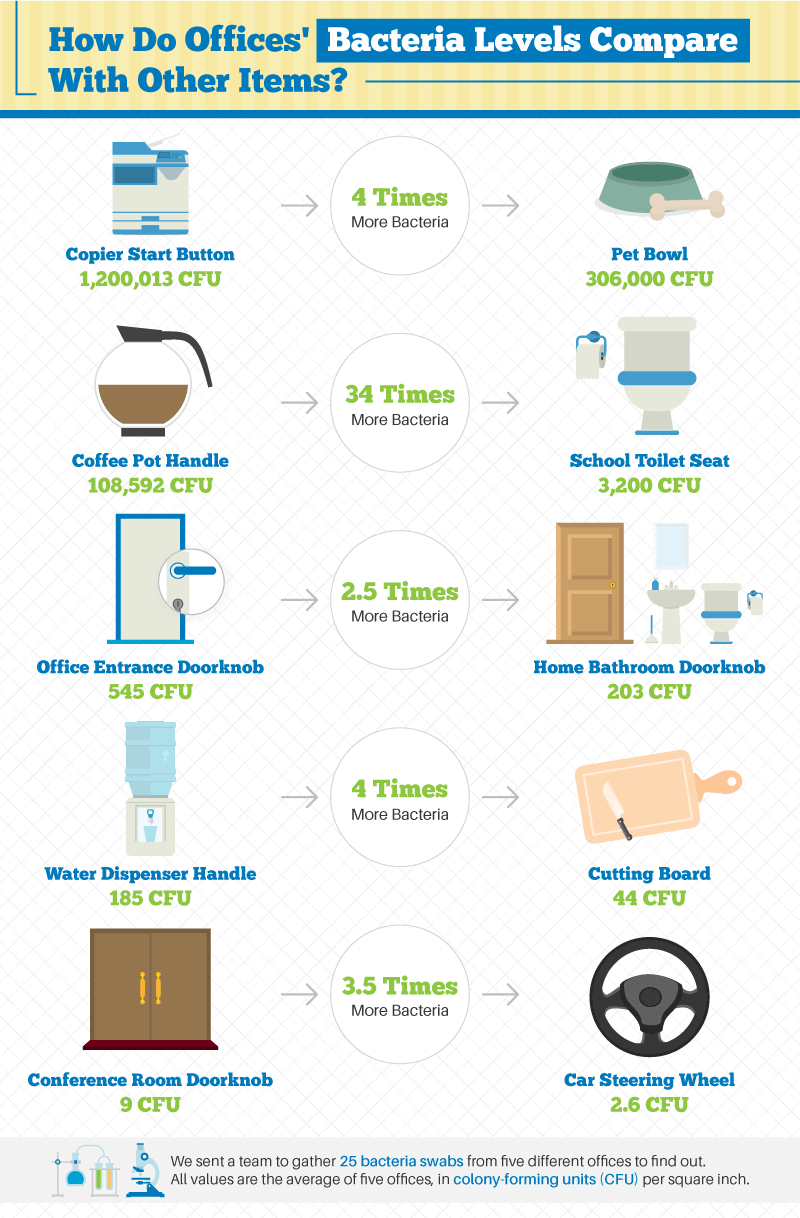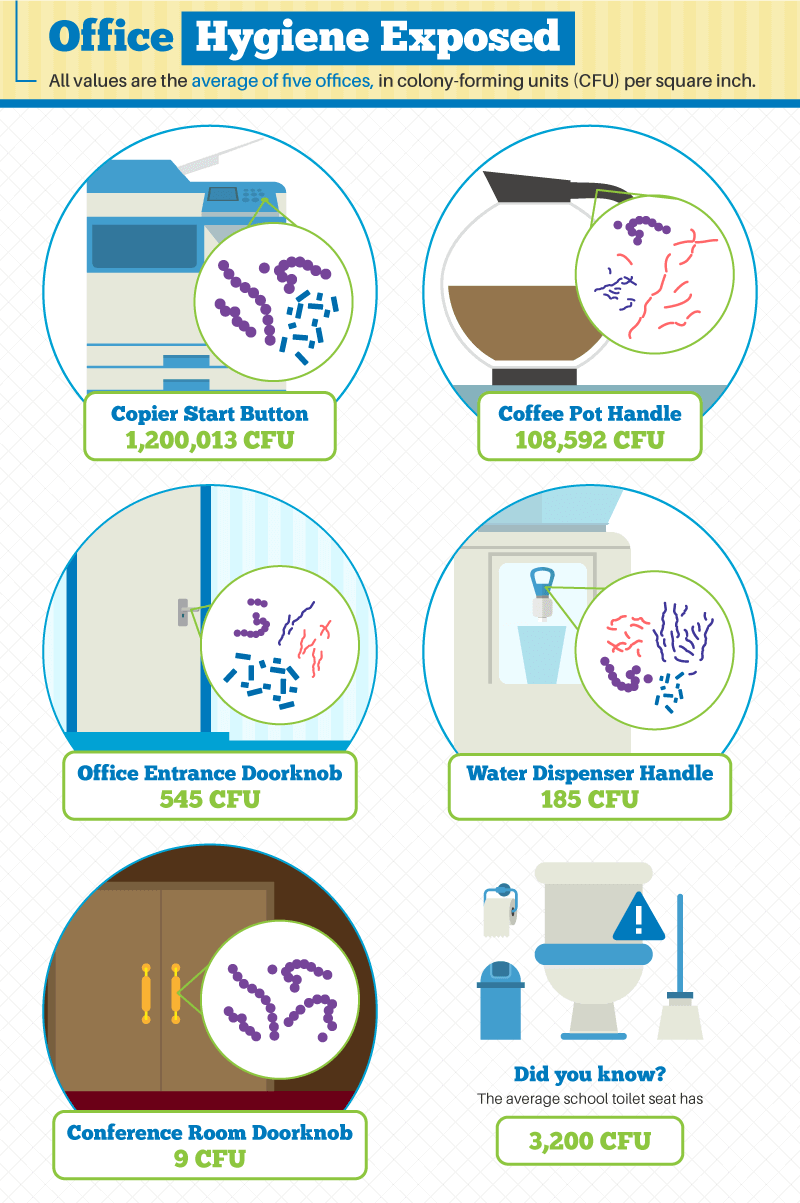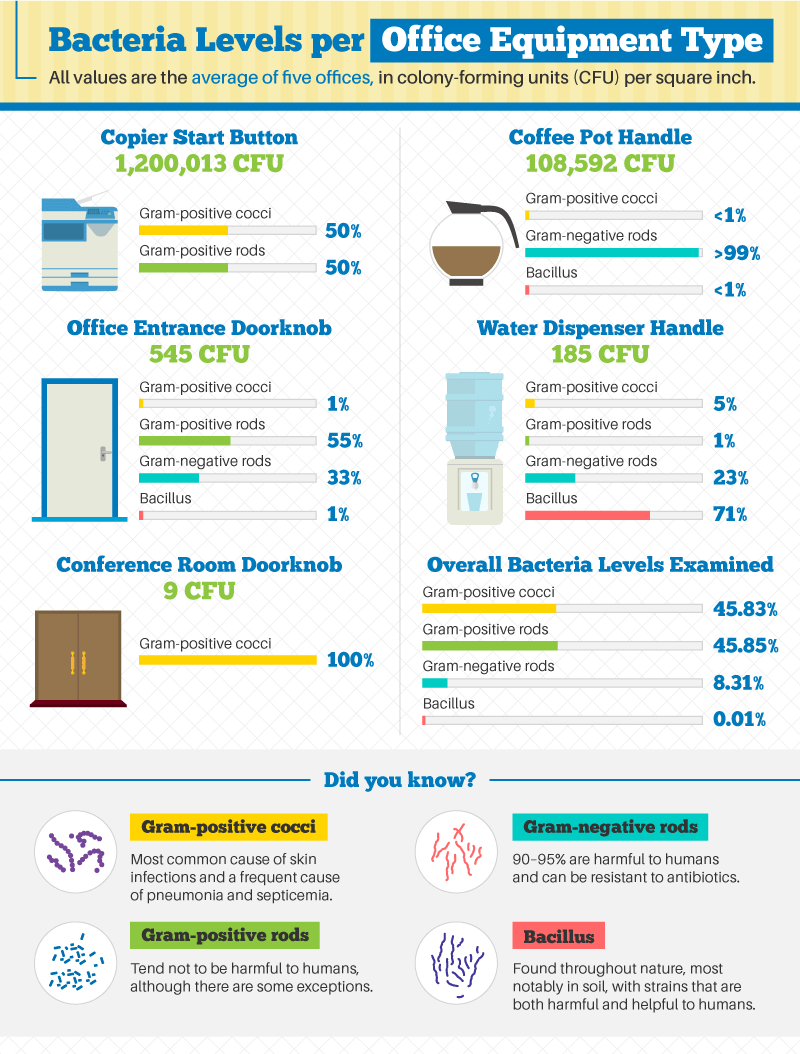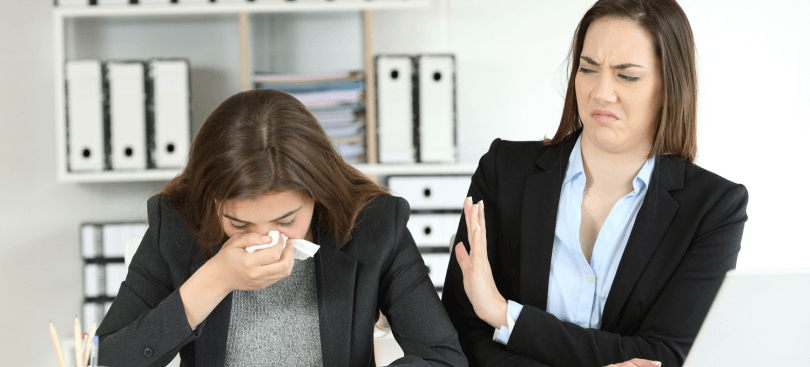Bacteria Showdown: The Office vs. The World

Germs are probably the last thing on your mind during a busy workday – but our test results reveal that your office may harbor many times more bacteria than you’d imagine. American coffee drinkers consume just under three cups a day, on average. Every time you and your caffeine-loving co-workers pour a cup of java, your hands touch a surface that’s crawling with germs – 34 times more than even a school toilet seat! (Forget cream and sugar – pass the soap and water!)
Making a few copies? Yikes – as your pointer finger is poised above the Start button, try not to shudder as you consider this: That tiny surface could contain 4 times more bacteria than your dog’s or cat’s slobbery kibble dish. And every time you and your officemates help yourselves to water, you’re probably touching more germs than you do when you’re slicing and dicing on your kitchen cutting board.
Find the ideal resume template to elevate your job search and land your dream job.
Germs, Germs, Everywhere!

Is there anything yuckier than a toilet in a busy public school? Actually, yes. In the office surfaces we tested, the copier Start buttons and the coffee pot handles both teemed with many, many times more germs than an average school toilet seat !
Bacteria are measured in colony-forming units (CFU), which refers to the number of viable bacteria cells in a sample – and we looked at CFU per square inch. While the copier and coffee pots were the worst offenders among those we tested, the office entrance doorknobs and water dispenser handles weren’t exactly the picture of cleanliness either.
Why might offices be so germy? For starters, employees touch around 30 items per minute in their workspaces, according to one expert. Your keyboard, your mouse, your desk – each time you touch these surface, you could be transferring bacteria. Additionally, many people are working together in close quarters – sharing a kitchen, restrooms, break rooms, and more. This means it’s easy for germs and infections to spread. One study revealed that it took only four hours for a (harmless) virus to spread from the front door of an office to over 50 percent of frequently touched surfaces!
Which Germs Lurk at Work?

Not all types of germs make people sick – in fact, some are even helpful. The samples we swabbed contained four types of bacteria: gram-positive cocci (a common cause of skin infections and even pneumonia and blood poisoning); gram-negative rods (which can be harmful); gram-positive rods (which in general are not harmful, although there are exceptions); and bacillus (which can be harmful or helpful, depending on the type).
Coffee lovers, beware – you may never again feel the same way about your favorite beverage.The coffee pot handles we tested were absolutely teeming with bacteria –the nasty kind. Around 99 percent of coffee pot germs were gram-negative rods, which can cause various infections and may even resist antibiotics.
Making copies? Wash your hands afterward! The bacteria-loaded copier Start buttons averaged an equal split between gram-positive rods and gram-positive cocci, which could potentially cause skin infections. On the water dispenser handles, over 70 percent of bacteria were bacillus – which has the potential to prompt various types of infections.
The doorknobs were a mixed bag: The entrance handles contained all four bacteria types – over half were gram-positive rods, while around one-third were gram-negative rods. The virtually bacteria-free conference room doorknobs contained only gram-positive cocci.
Working on Office Hygiene Habits
It’s clear that bacteria may be among the most productive organisms at many workplaces – but there’s no need to quit your job just to stay healthy. Practicing some basic hygiene at the office can help keep germs at bay: Wash your hands frequently, and try not to touch your eyes, mouth, and nose. Also, be sure to cover your mouth if you cough or sneeze, and stay home if you’re sick. Finally, it’s important that surfaces and objects in the office are cleaned frequently – especially those that people touch often.
We at Hloom are dedicated to helping you thrive in your professional life – and we’re happy to provide you with educational content like this. If you want even more tools to succeed, visit qa.hloom.com to find over 800 professional templates. You can download, customize, and print a wide range of styles – all at no cost.
Sources
- https://d2evkimvhatqav.cloudfront.net/documents/2011_NSF_Household_Germ_Study_exec-summary.pdf
- https://misuse.ncbi.nlm.nih.gov/error/abuse.shtml
- https://www.cdc.gov/flu/prevent/actions-prevent-flu.htm
- https://www.cdc.gov/nonpharmaceutical-interventions/workplace/employees.html
- https://www.britannica.com/science/bacillus-bacteria
- https://www.cdc.gov/hai/organisms/gram-negative-bacteria.html
- https://www.womenshealthmag.com/health/g19987777/ways-to-stay-germ-free/
- https://news.gallup.com/poll/184388/americans-coffee-consumption-steady-few-cut-back.aspx
- https://www.wsj.com/articles/germs-at-the-office-are-often-found-on-keyboards-and-at-coffee-stations-1412032235
Methodology
Using TransPorter Sterile Transport Swabs provided by EMLab P&K, we swabbed the coffee pot handle, water cooler handle, copier Start button, office entrance door handle, and conference room door handle in five offices of varying sizes.
We then sent our swabs to the lab provided through EMLab P&K to analyze our results. In turn, they provided us with the number of colony-forming units present on each of the surfaces we swabbed as well as a breakdown of the specific bacteria present. Using the numbers from each surface, we were able to determine the average colony-forming units and bacteria distributions for each surface in our sample.
Fair Use
If you’re a journalist interested in covering this project, we encourage you to use any of the graphics included above. We just ask that you attribute Hloom fairly in your coverage and provide a link to this page so that your readers can learn more about the project.

